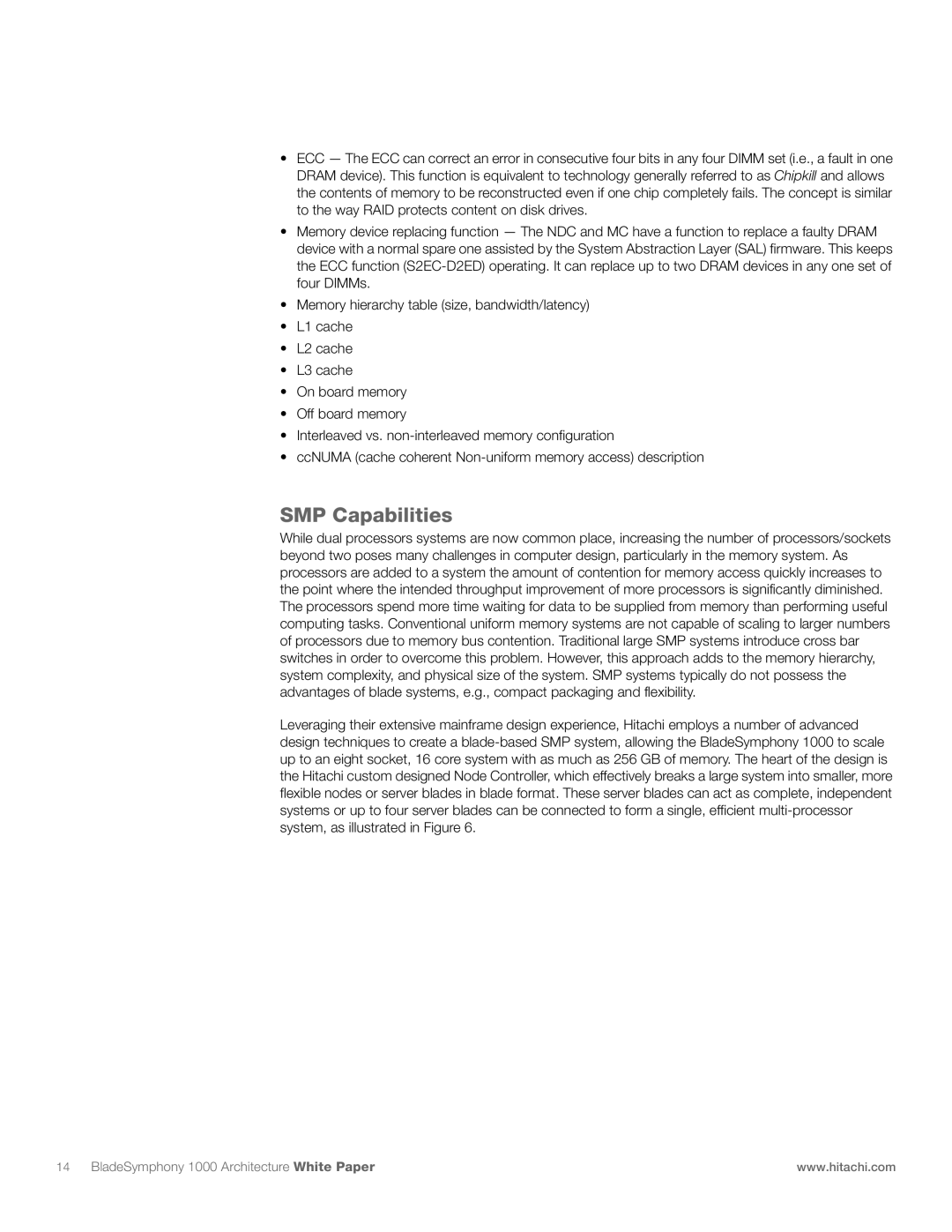•ECC — The ECC can correct an error in consecutive four bits in any four DIMM set (i.e., a fault in one DRAM device). This function is equivalent to technology generally referred to as Chipkill and allows the contents of memory to be reconstructed even if one chip completely fails. The concept is similar to the way RAID protects content on disk drives.
•Memory device replacing function — The NDC and MC have a function to replace a faulty DRAM device with a normal spare one assisted by the System Abstraction Layer (SAL) firmware. This keeps the ECC function
•Memory hierarchy table (size, bandwidth/latency)
•L1 cache
•L2 cache
•L3 cache
•On board memory
•Off board memory
•Interleaved vs.
•ccNUMA (cache coherent
SMP Capabilities
While dual processors systems are now common place, increasing the number of processors/sockets beyond two poses many challenges in computer design, particularly in the memory system. As processors are added to a system the amount of contention for memory access quickly increases to the point where the intended throughput improvement of more processors is significantly diminished. The processors spend more time waiting for data to be supplied from memory than performing useful computing tasks. Conventional uniform memory systems are not capable of scaling to larger numbers of processors due to memory bus contention. Traditional large SMP systems introduce cross bar switches in order to overcome this problem. However, this approach adds to the memory hierarchy, system complexity, and physical size of the system. SMP systems typically do not possess the advantages of blade systems, e.g., compact packaging and flexibility.
Leveraging their extensive mainframe design experience, Hitachi employs a number of advanced design techniques to create a
14 BladeSymphony 1000 Architecture White Paper | www.hitachi.com |
